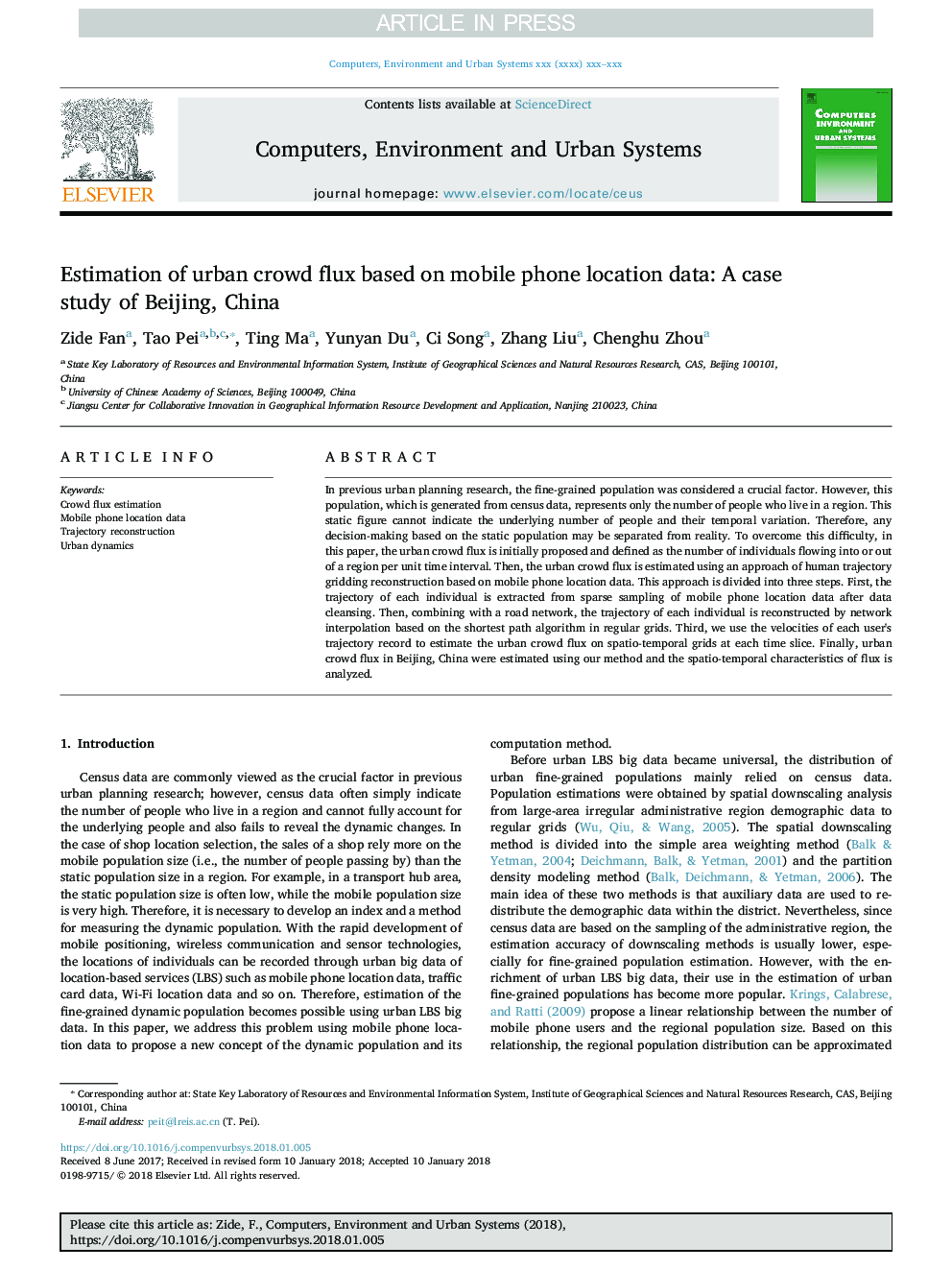| Article ID | Journal | Published Year | Pages | File Type |
|---|---|---|---|---|
| 6921860 | Computers, Environment and Urban Systems | 2018 | 10 Pages |
Abstract
In previous urban planning research, the fine-grained population was considered a crucial factor. However, this population, which is generated from census data, represents only the number of people who live in a region. This static figure cannot indicate the underlying number of people and their temporal variation. Therefore, any decision-making based on the static population may be separated from reality. To overcome this difficulty, in this paper, the urban crowd flux is initially proposed and defined as the number of individuals flowing into or out of a region per unit time interval. Then, the urban crowd flux is estimated using an approach of human trajectory gridding reconstruction based on mobile phone location data. This approach is divided into three steps. First, the trajectory of each individual is extracted from sparse sampling of mobile phone location data after data cleansing. Then, combining with a road network, the trajectory of each individual is reconstructed by network interpolation based on the shortest path algorithm in regular grids. Third, we use the velocities of each user's trajectory record to estimate the urban crowd flux on spatio-temporal grids at each time slice. Finally, urban crowd flux in Beijing, China were estimated using our method and the spatio-temporal characteristics of flux is analyzed.
Related Topics
Physical Sciences and Engineering
Computer Science
Computer Science Applications
Authors
Zide Fan, Tao Pei, Ting Ma, Yunyan Du, Ci Song, Zhang Liu, Chenghu Zhou,
